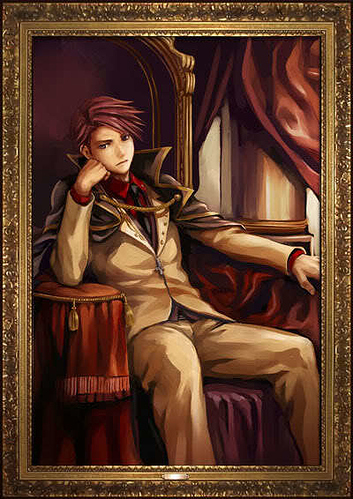So, there’s a lot to talk about with this one, isn’t there?
Without love, it cannot be seen.
And certainly, love is a focus of this episode.
The game diverges from Beatrice’s idea further than than even the previous one: Erika, distraught after her loss in the last episode and with Bern looming overhead, sets out to destroy Battler’s game entirely.
Personally, I found the setup to Battler’s game quite interesting, and it’s a shame this one couldn’t have been played out properly, though some fraction of it seems to be me not understanding how the mystery and fantasy narratives mesh, if discussion I had with @Karifean is accurate. Every murder is committed by someone different: Eva’s body is teleported wholesale, even.
Jessica’s murder* of Kyrie was a very interesting scene I thought, just with what was going on, and the heat punch was sure something. It would seem the room was not scorched in reality, which is kind of a shame in the sense that I’d have liked to see that one argued over. This scene also made me think “Okay, I can see how a fighting game came out of this.”
The twofold purpose of the murders was also an interesting touch. Thanks Erika for ruining all of this.
We also get some information out of Rosa and Kyrie on their relationships, which was neat, although Kyrie’s was kind of messed up, and I was hoping Maria’s father would be a bit more of a good guy. And Eva tells George to get back in her womb. Battler kills* his piece version, which was interesting.
Oh yeah, if you’re an Erika fan, this one may be mostly unpleasant for you.
So, Erika and Bernkastel do not employ the detective’s authority on this one, seeking to achieve a victory that weighs more than their previous loss. Battler also prevents Erika from making the seals that dogged him last time.
Battler, general good guy that he is (though his behavior in the cookie scene, if somewhat understandable given what’s going on, was not well-received by me. I agreed with Kumasawa.) took pity on her after seeing her upset, and let her have “three rooms worth” of seals. And yeah, it was super a trick. Thanks Erika.
Oh yeah, speaking of Erika, this is about the dumbest opinion I’ve ever seen:
It’s not even considered a romance.
Erika also fights a nine-year old. And only mostly wins, with facts withheld. Nice.
Erika does have a somewhat more humanizing scene with Dlanor, and about how Erika was cheated on by a past boyfriend. But erika still insults Dlanor anyway.
It’s not long after the packing tape discussion that I lament the fact that I had already heard the “Shannon = Kanon” and “Shannon = Beatrice” theories.
And now, to get into the meat of the episode: the closed room fight. This scene was incredibly tense, just everything that happened until Lambda’s verdict.
And then we found out that Erika did what I expected of her at one point in the previous episode: The detective proclamation was withheld so that Erika could become the culprit, reversing Battler’s closed room on him.
What follows is a bit painful. You know what all I mean.
Shannon and Kanon’s dialogue in their duel is worth noting, I think, and the duel itself was more interesting than I’d have expected. And it sets up
The wedding. Oh, this whole final act is just something. I don’t think I can say a whole lot that you haven’t understood already, if you feel similarly. Beatrice vs Erika was something we needed to see, and a fair amount of the cast gets good moments throughout.
I was surprised that Battler and Beatrice straight up got married though. Beatrice calls Battler her husband, wow.
The solution to the closed room did puzzle me somewhat, which reduced it a bit for me, but not very much.
I want to read parts of this chapter again already, just wow.
Earlier I mentioned that I lamented hearing certain fan theories. This is because those seem rather strong to me by this point, albeit they aren’t without questions.
So, I haven’t mentioned the Ange/Featherine narrative yet. In general I would prefer if someone else try to get the ball rolling on that one.
The latter tea party, though. We see a more…hellish side to Featherine here. There’s so much creepiness going on with her interactions with Bern and it goes miles to set her up. I can just imagine her visage twisting into a monster with claws and fangs…
She, like some readers at this point, simply want the answers. A shame, for all of her talk earlier about readers who don’t think and all, she doesn’t seem open to considering what the next one could offer. I’m very curious as to where her character goes.
Well, whenever you all get here, I hope this will help to facilitate discussion.








